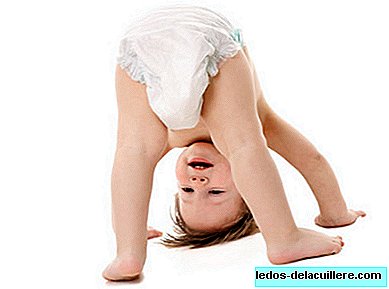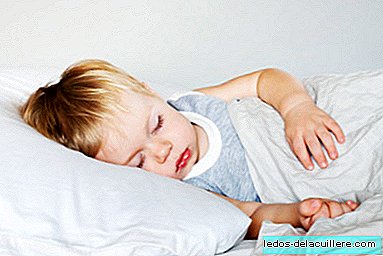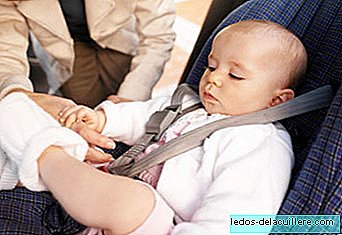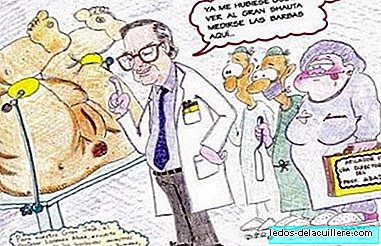Schizophrenia is a complex chronic disease, characterized by the presence of various symptoms, to a different degree throughout the course of the disease and that can lead to deterioration if left untreated. In childhood stages schizophrenia is not very frequent, is in an initial state that manifests fully in adulthood.
However, childhood schizophrenia is studied and treated as one of the branches of childhood and adolescent psychiatry, along with other mental disorders. Let's see what are the symptoms of childhood schizophrenia, which in any case requires a clinical diagnosis, as well as risk factors for this disease.
Schizophrenia is a brain disorder that impairs the ability of people to elaborate their thoughts, dominate their emotions, make decisions and interact with others, although the disease does not affect those who suffer.
In general, it can be said that the disease involves delusions, hallucinations or disorganized speech, and reflects a poor ability to live normally, so it can be disabling.
In children, sometimes the symptoms of schizophrenia are confused with other disorders, related to depression or behavioral disturbances (by showing withdrawal, aggressiveness ...). For this reason and because a deterioration of the symptoms can occur, the clinical diagnosis by a specialist is important, as we will see.
In spite of everything, the signs of schizophrenia usually begin between the ages of 25 and 30. And although it is not common for a child to be diagnosed with schizophrenia, it can occur before the age of 18. In children under 13 years of age the diagnosis is exceptional. In younger children, not all psychopathological symptoms can occur due to the cognitive immaturity they present.
Risk factors for childhood schizophrenia
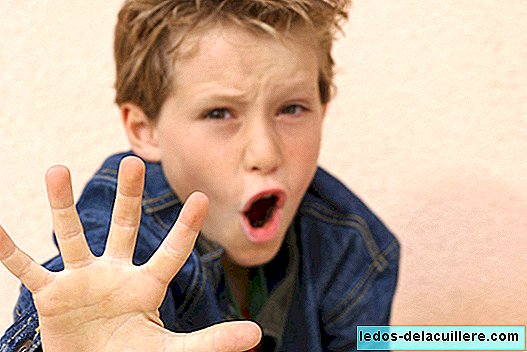
According to the Spanish Association of Child and Adolescent Psychiatry (AEPNYA), the prevalence of schizophrenia in the child-youth population It is 0.23%, with an incidence of 1.4-2 / 10,000, although there are no data in the Spanish population. In the adult population the prevalence is 1%.
There are some risk situations of schizophrenia, including family history:
- Family history of schizophrenia. There are epidemiological studies that indicate that between 12-15% of the children of a schizophrenic parent have the disease, rising to around 45% when both parents are schizophrenic.
- As for the siblings of the patients, the probability of presenting schizophrenia is 10%, reaching up to 46% in the case of monozygotic twins.
- Obstetric complications, especially hypoxia.
- Infections and malnutrition in pregnancy.
- Delay in psychomotor development.
- Motor coordination disorder and speech disorder.
- Difficulties in social adaptation.
- The use of cannabis could be a risk factor in the onset of schizophrenia, despite the controversy that exists around the possible effects that this soft drug can cause, according to the Primary Care Pediatrics Association (AEPap) on the occasion of the Ninth Refresher Course in Primary Care Pediatrics.
Keep in mind that some signs related to schizophrenia at an early age such as speech delay, late or atypical crawling, delayed walking and other abnormal motor behaviors, such as swinging or shaking the arm, coincide with developmental or autism spectrum disorders , so you have to be very careful in the diagnosis and rule out possibilities.
As we can see, the population of children and siblings of schizophrenic patients is considered to be at high genetic risk of suffering from the disease and will have a special follow-up. But, How to know if a child has symptoms of schizophrenia?
Symptoms of childhood schizophrenia

Schizophrenia is a disease that causes strange thoughts and feelings, as well as unusual behavior. As we have pointed out at the beginning, it is a rare psychiatric disease in children and is very difficult to recognize in its early stages. In addition, the behavior of infants and adolescents with schizophrenia may be different from that of adults with such disease.
Although the cause of schizophrenia is unknown, there are current studies that suggest that certain changes in the brain and biochemical, genetic and environmental factors may play a role.According to the American Academy of Child and Adolescent Psychiatry, psychiatrists look for the following early warning signs in young people with schizophrenia:
- See things and hear voices that are not real (hallucinations)
- Behavior and / or strange or eccentric language
- Unusual and rare ideas and thoughts
- Beliefs not based on reality (delusions)
- Confusion in the way of thinking
- Changing mood in the extreme
- Ideas that "they are chasing him" or talking about him
- Behave like a younger child
- Severe anxiety and fearfulness
- Confusion of television and dreams with reality
- Problems making and retaining friendships
- Withdrawal and increase in isolation
- Decrease in personal hygiene
The behavior of children with schizophrenia can change slowly over time and we must be aware of these changes. For example, children who enjoyed interacting with others may begin to be shy and withdrawn. Many children begin to talk about strange fears and ideas and behave as if they lived in their own world.
Schizophrenia is a very serious chronic psychiatric illness and timely diagnosis and medical treatment is essential. It is a lifelong disease that can be controlled, but not cured. If a child has the problems and symptoms listed above, a comprehensive evaluation should be done by a specialist trained and used to deal with this disease.
Psychotic symptoms in children are not usually schizophrenic. Therefore, for the clinical diagnosis, additional analytical examinations (including thyroid, copper and ceruloplasmin ...) will be carried out to differentiate from other diseases (epilepsy, tumors, lupus, encephalitis ...).
If the diagnosis is confirmed, usually these children with schizophrenia They will need multidisciplinary treatment plans and a combination of medications and individual therapy, family therapy and specialized programs (schools, activities, etc.). There is antipsychotic drugs They can help treat many symptoms of schizophrenia, but they should be controlled under strict medical supervision.
Only in extreme cases in the manifestation of schizophrenia (periods of crisis, danger of self-injury, episodes of extreme aggressiveness ...) will the hospital be admitted to the child.Keep in mind that all antipsychotic medications have side effects and possible health risks, some very important. In addition, these side effects in children and adolescents may not be the same as in adults, so you have to be very confident in the enrollment and attentive to its effect.
In some cases it can be useful psychotherapy with a mental health professional, both individual and family therapy, to help the child learn ways to deal with the stress and challenges of daily life caused by schizophrenia, learn to communicate better with the child and he with others ...
How schizophrenia is diagnosed in children
According to the ICD-10 in force (International classification of diseases, tenth version), these are the criteria to diagnose schizophrenia, always by the medical professional:
- Echo, theft, insertion or diffusion of thought.
- Delusional ideas of control, influence or passivity, or strange delusional ideas of another type and delusional perception.
- Auditory hallucinations that comment on the patient's behavior, discuss with each other or with a similar meaning.
- Persistent delusional ideas of another kind that are not appropriate to the culture of the individual or that are completely impossible, such as those of religious identity (…)
- Persistent hallucinations in any way, when they are accompanied by unstructured and fleeting delusions without clear affective content, or persistent overvalued ideas, or when they are presented daily for weeks, months or permanently.
- Interpolations or blockages in the course of thought, which give rise to a divagatory, disintegrated, incoherent language or full of neologisms.
- Catatonic manifestations, such as excitation, characteristic postures or waxy flexibility, negativism, mutism, stupor.
- "Negative" symptoms such as marked apathy, impoverishment of language, dullness or affective incongruity. It should be clear that these symptoms are not due to depression or neuroleptic medication. 9. A consistent and significant change in the general quality of some aspects of personal behavior, which manifest as loss of interest, lack of objectives, idleness and social isolation.
In addition, it is noted that the diagnosis of schizophrenia it will not have to be done in the presence of relevant depressive or manic symptoms, unless the schizophrenic symptoms clearly began before the affective disorder. Nor should schizophrenia be diagnosed in the presence of a manifest brain disease or during intoxication by psychotropic substances or withdrawal from them.
Schizoid disorder and schizophrenia
We end by establishing the distinction between schizoid disorder, which is included in the classification of generalized developmental disorders and schizophrenia.
Schizoid disorder hinders the ability to interact with others, causing strange thoughts, excessive worry and fear, isolation ... But there is no disconnection from reality, since there is no difficulty in distinguishing real experiences from fantasies. It can be treated by psychotherapy, while for schizophrenia the treatment is pharmacological.
As always, it will be the medical specialist who determines the extent of the child's illness in line with the symptoms observed, making the necessary tests and follow-up, and confirm or not the diagnosis of schizophrenia.
Photos | iStock
More information | AEPED, Psychology Guide, AEPNYA Clinical Potocolos (pdf.)
In Babies and more | Child stress related to mental disorders in adulthood, Babies born with low weight are at greater risk of mental illness, Autism in babies and children: everything you need to know


